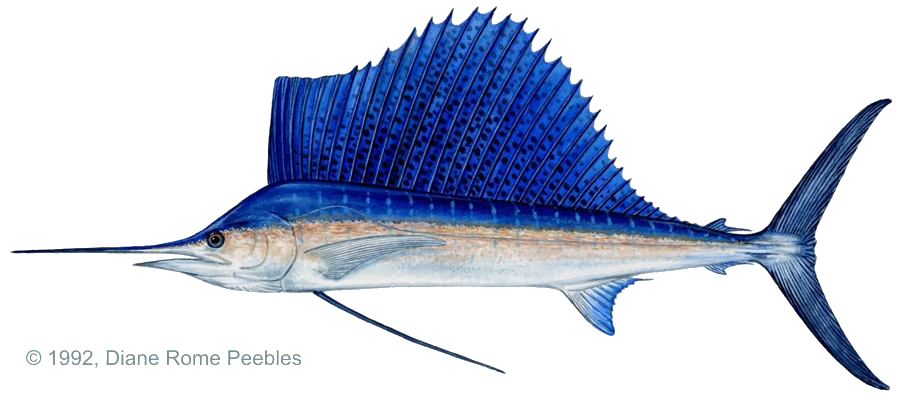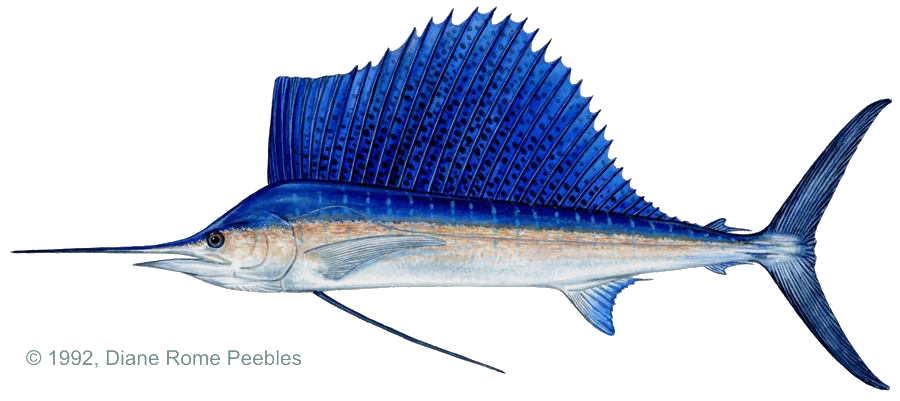Game Fish Identification Reference Guides
Sailfish, Pacific
(Istiophorus platypterus)
(Istiophorus platypterus)

(Shaw & Nodder, 1791); ISTIOPHORIDAE FAMILY; also called spindlebeack, bayonetfish
Inhabits tropical and subtropical waters near land masses, usually in depths over 6 fathoms, but occasionally caught in lesser depths and from ocean piers. Pelagic and migratory, sailfish usually travel alone or in small groups. They appear to feed mostly in midwater along the edges of reefs or current eddies.
Its outstanding feature is the long, high first dorsal which is slate or cobalt blue with a scattering of black spots. The second dorsal fin is very small. The bill is longer than that of the spearfish, usually a little more than twice the length of the elongated lower jaw. The vent is just forward of the first anal fin. The sides often have pale, bluish gray vertical bars or rows of spots.
Its fighting ability and spectacular aerial acrobatics endear the sailfish to the saltwater angler, but it tires quickly and is considered a light tackle species. Fishing methods include trolling with strip baits, plures, feathers or spoons, as well as live bait fishing and kite fishing. The most action is found where sailfish are located on or near the surface where they feed.
Recent acoustical tagging and tracking experiments suggest that this species is quite hardy and that survival of released specimens is good
Inhabits tropical and subtropical waters near land masses, usually in depths over 6 fathoms, but occasionally caught in lesser depths and from ocean piers. Pelagic and migratory, sailfish usually travel alone or in small groups. They appear to feed mostly in midwater along the edges of reefs or current eddies.
Its outstanding feature is the long, high first dorsal which is slate or cobalt blue with a scattering of black spots. The second dorsal fin is very small. The bill is longer than that of the spearfish, usually a little more than twice the length of the elongated lower jaw. The vent is just forward of the first anal fin. The sides often have pale, bluish gray vertical bars or rows of spots.
Its fighting ability and spectacular aerial acrobatics endear the sailfish to the saltwater angler, but it tires quickly and is considered a light tackle species. Fishing methods include trolling with strip baits, plures, feathers or spoons, as well as live bait fishing and kite fishing. The most action is found where sailfish are located on or near the surface where they feed.
Recent acoustical tagging and tracking experiments suggest that this species is quite hardy and that survival of released specimens is good













